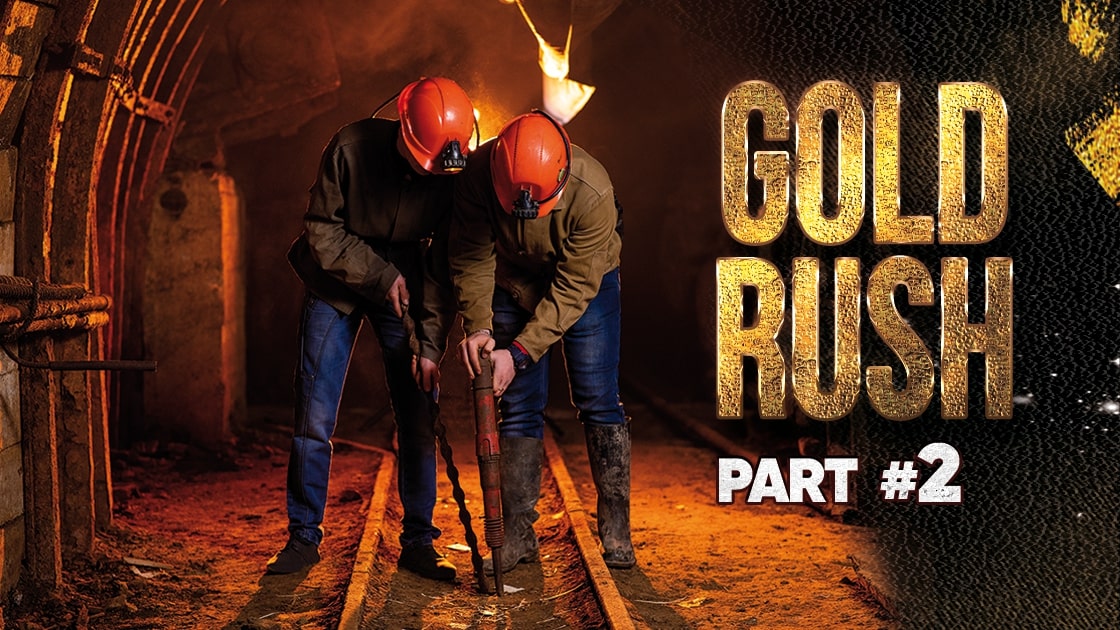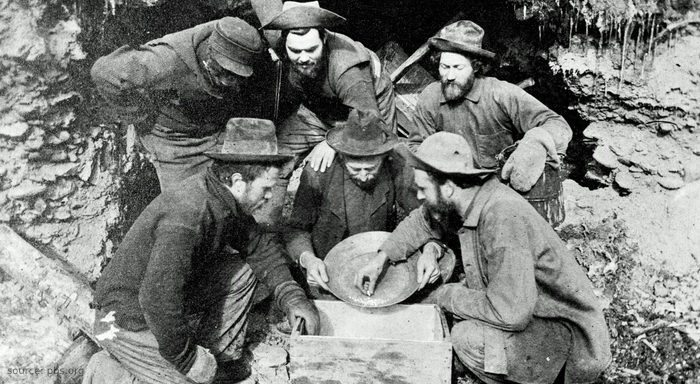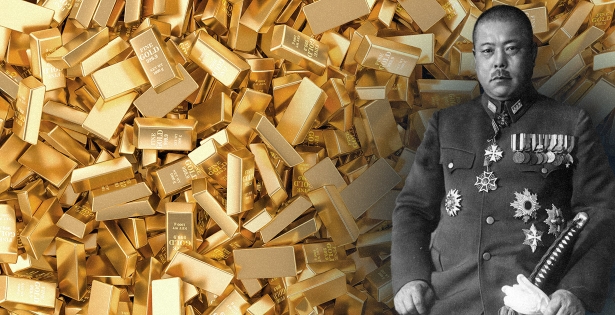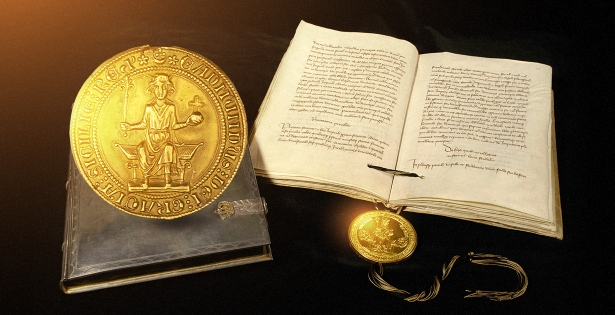
Gold Rush: Canada
The Gold Rush at the Klondike River is well-known throughout the world.
The word “Klondike” became a household name, meaning infinite and easily accessible treasures. However, few people could grasp the tremendous amount of effort that was made, years of hard work and resources (including money) that were spent by the prospectors to realize their dreams of becoming rich in Alaska.
The Northern El Dorado
For Jim Skookum, Charlie Dawson, George Carmack and Robert Henderson, 1896 was a lucky year. Every one of them dreamed of becoming rich, but to no avail, they did whatever work came their way: hunting, fishing, provided services of guides in Alaska. They were also searching for gold, but without success, until one day…
They made a quick stop near the Klondike River to fish, one of them wanted to try his hand at deer hunting and moved away from the campsite down the creek. During the cutting and washing of the carcass, the hunter saw a lot of gold nuggets, he shared the good news with his friends. Friends bought out the land in that area, and a little later other local prospectors joined them in that endeavor. The creek was called El Dorado.

In the photo: The Gold Rush began with the fact that George Carmack brought a gun case filled with gold to the bank in exchange for money.
The first $0,5 million worth gold was delivered to San Francisco by a cargo ship in June 1897, and another ship loaded with gold arrived at the port afterward. The report of the geologist William Ogilvie provides information on the annual production of gold amounting to $2,500,000. The following year, thousands of fortune hunters traveled to the north to try their luck.
A difficult journey to gold
The shortest way to the gold-bearing river was from Seattle through Vancouver along the shore of the Pacific Ocean. Next, the travelers had to cross the mountain range, which was guarded by the Chilkoot Indians. After that, they had to sail up the northern rivers (600 miles), crossing dangerous rapids. The whole journey took 4,500 kilometers.

In the photo: the line of treasure hunters on the Chilkoot Pass trail.
Many people perished during the passage: they sank along with the ships, died of Indian arrows, froze to death on the road, disappeared in avalanches. Given the difficult and dangerous road, only 30% of people made it through and reached the gold-bearing tributaries of the Klondike in 1897 — more than 30,000. By the end of the year, all the free land was occupied.
Salt was more valuable than gold
Dawson City was the nearest settlement to the place where gold was mined, named after George Dawson — the leader of the first geological expedition in Yukon. The miners replenished stocks of food and necessary equipment in the town, paying with golden sand and gold nuggets.
Spent more than earned
The Klondike Gold Rush lasted for two years, gradually coming to its end.
It is estimated that the amount of money spent by the miners in the Klondike region far exceeded their earnings. Gold miners earned $22 million on gold in a couple of years, but they spent incomparably more: $200 million ended up in the wallets of merchants, guides, dancers and crooks.
In our next article, we will talk about the legendary events that happened in South Africa.
Read our article about giant gold nuggets




